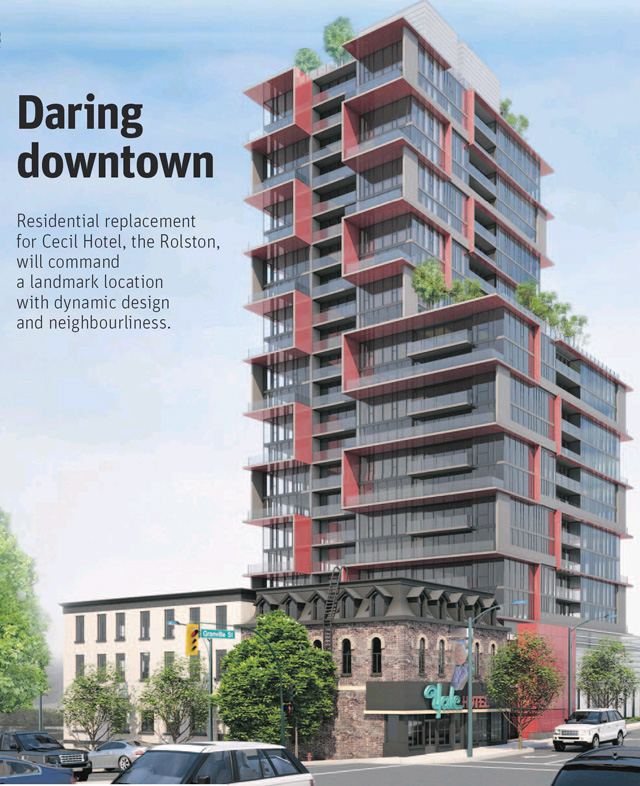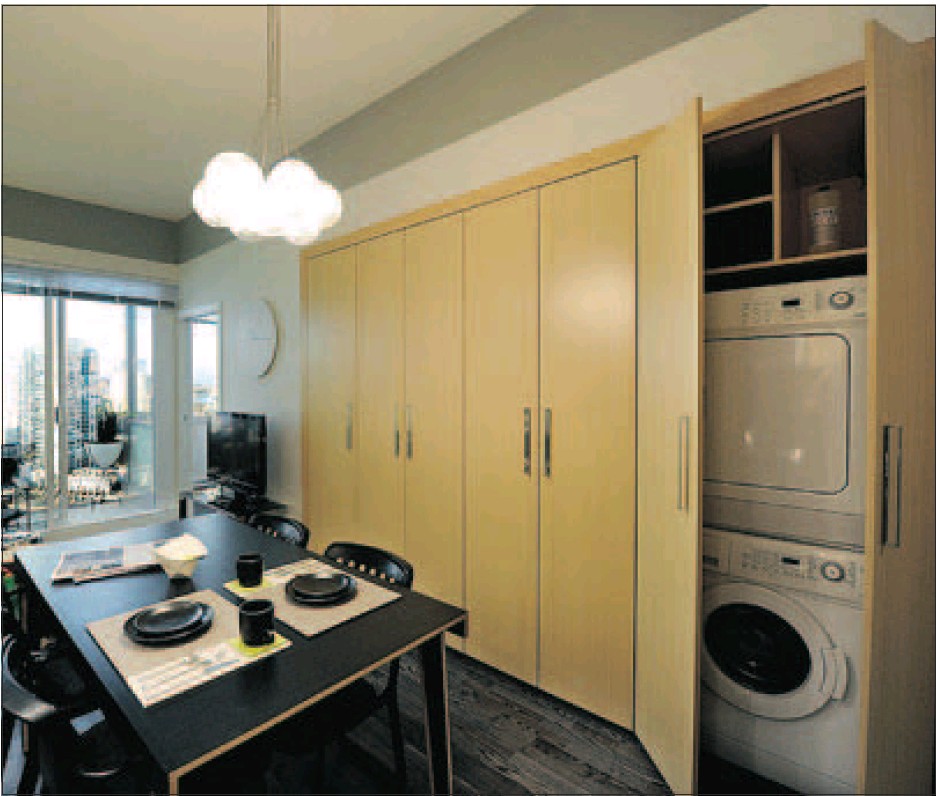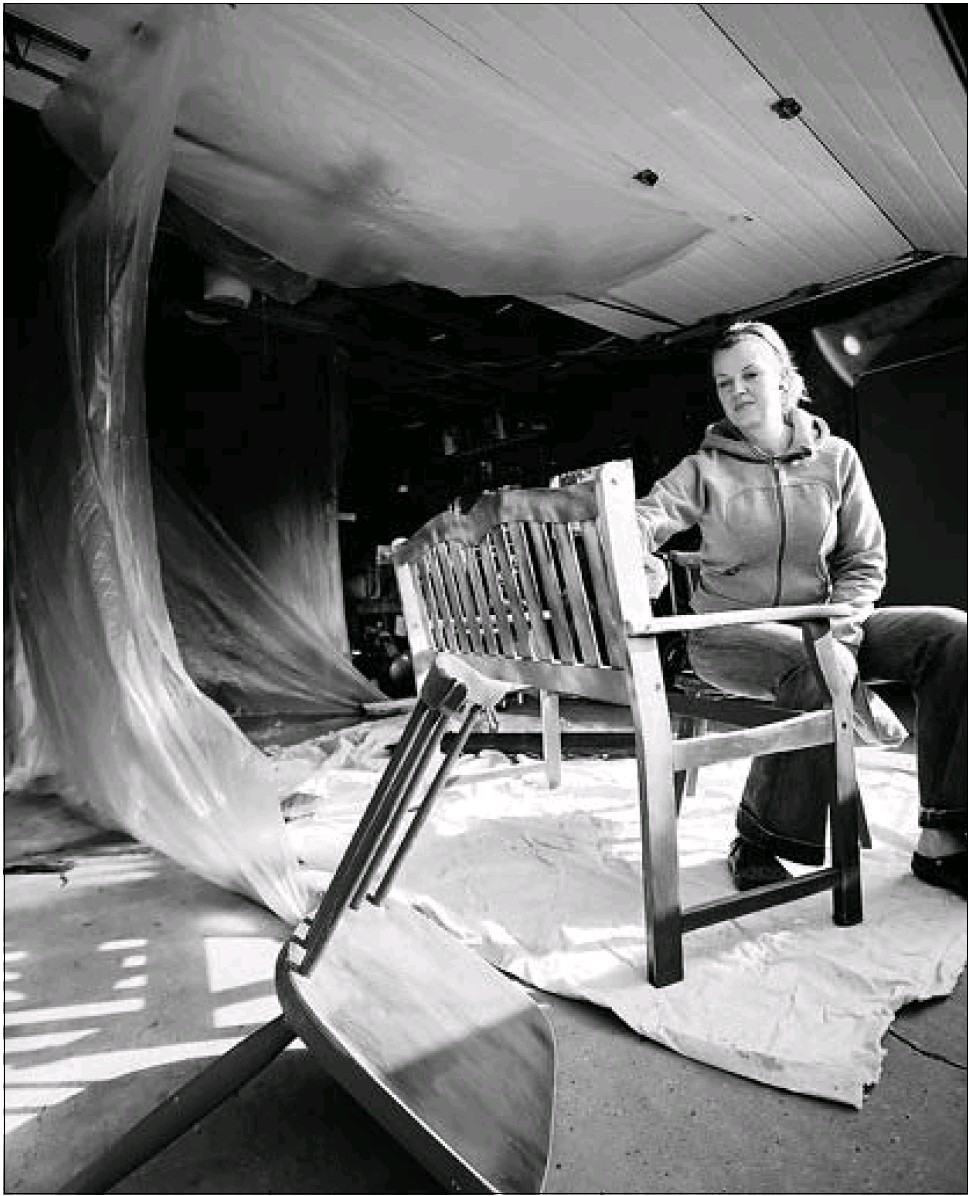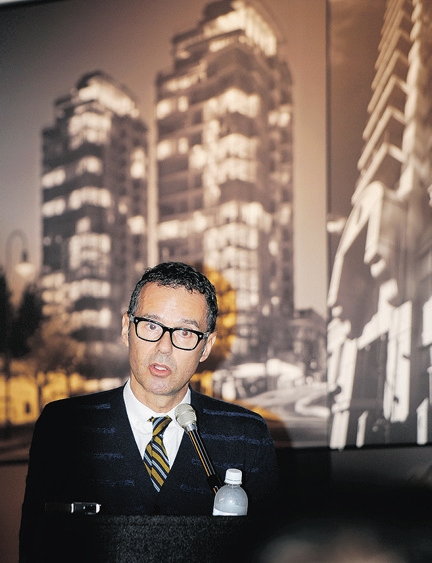Christina Symons
Sun
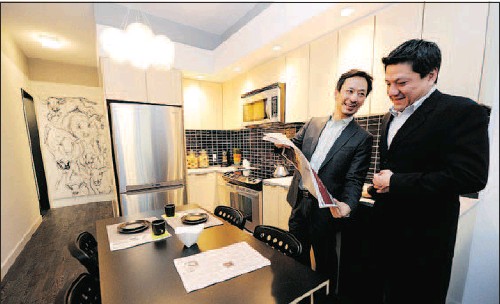
The Rolston developer Will Lin, left, and the organizer of the Rolston sales and marketing campaign, Bill Szeto, are selling the homes from two show homes. They posed in the Yale show home.
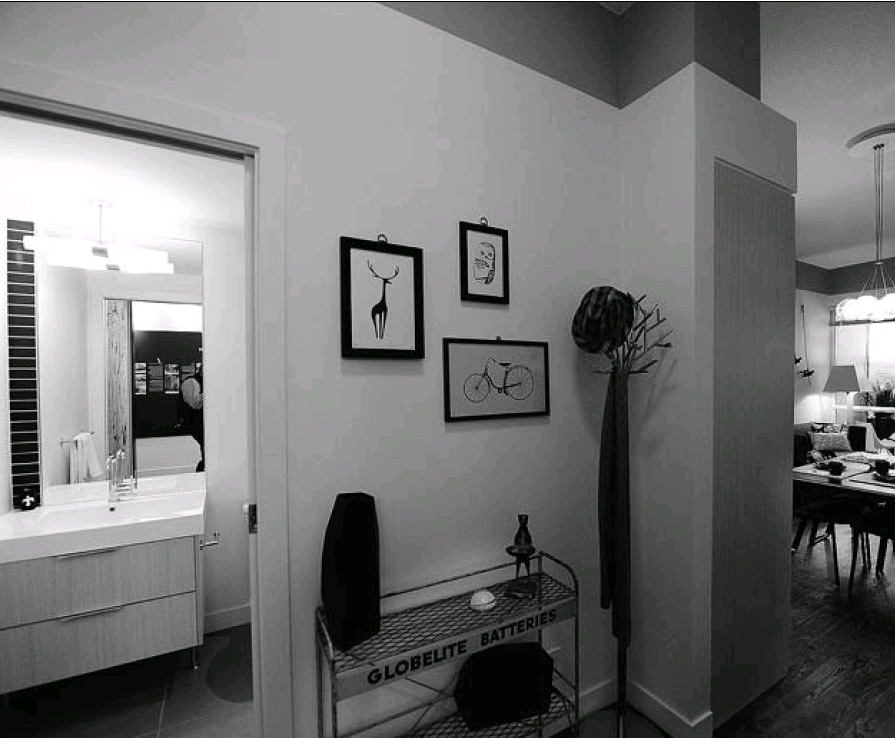
In one Rolston design, the Yale, the sleeping arrangement is conventional.

In one Rolston design, the Yale, the sleeping arrangement is conventional.
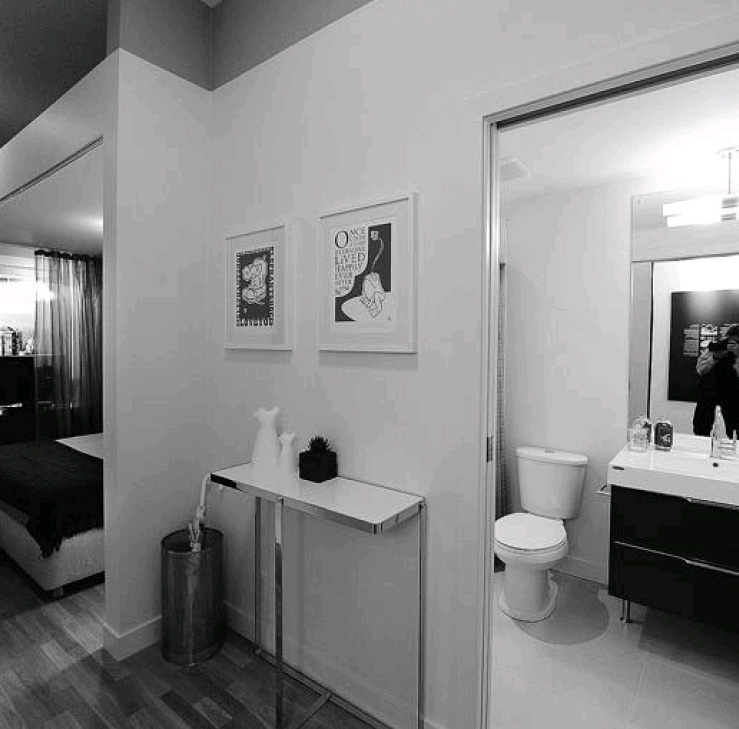
In the other, the Cecil, it’s a departure, although not necessarily for a downtown studio

Rolston model in the sales centre
The Rolston
Project location: Granville at Drake, Vancouver
Project size: 187 units
Residence size: 461 sq. ft. — 890 sq. ft.
Prices: From $300,000
Developer: Rize Alliance Properties Ltd.
Architect: IBI/HB Architecture
Interior design: Cause + Affect
Sales centre: 999 Seymour Street (at Nelson)
Hours: noon -5 p.m., Sat — Thur (opens mid-April)
Telephone: 604-688-8927
E-mail: [email protected]
Web: therolston.com
Occupancy: Summer 2012
—
In the early 1950s, then-B. C. education minister Tilly Rolston stood up for a controversial sex education curriculum called Effective Living. Rolston, a member of W.A.C. Bennett’s Social Credit Party and co-founder of the B.C. Council of Women, was emphatic in her defence of the subject matter, declaring: “We want no sausage-machine citizens. We want no tremendous amount of uniformity. We want a measure of individuality …”
She obviously wasn’t referring to the likes of the open-minded set who’ll seek an address at the savvy new tower rising from the roots of the Cecil Hotel, an infamous strip joint adjacent to the Yale Hotel at Granville and Drake. But today, the same desire to foster a sense of spirited, informed living resonates.
Fittingly, the building, much like Rolston herself, promises to be a Vancouver original.
“Tilly Rolston was someone who was very pioneering,” says Will Lin, chief executive officer of property developer Rize Alliance. The politician’s surname has also been given to a Granville-area street called Rolston Crescent. “Architecturally, the building feels very original to us -as though it says, ‘I’m strong and I belong here.'”
The backstory on Rize Alliance includes selective, yet signature additions to Vancouver, including the first loft conversion project in Yaletown in 1991, the London Building on West Pender, the Cossette Building on Homer and Metropolis on Richards.
The Rolston project, Rize Alliance’s latest, was initiated by Wade Luciak, the long-term owner of the Yale and a previous owner of the Cecil Hotel.
Luciak aimed to do a sensitive redevelopment, says Lin. Refreshing the Yale, the rhythm and blues capital of Vancouver, was also a priority.
A proposal call went out to developers and ultimately, Rize Alliance rose to the top. After a year of negotiations, the team was invited to enter into an agreement with Luciak to purchase and develop the Cecil Hotel property, while providing the Yale with much-needed revamping.
And so, the Cecil is coming down, new residences are going up and the Yale will be revealed, a fresher version of itself. The Yale Hotel housing will also be modernized with 44 rooms renovated for single-room occupancy. Existing residents will be relocated, with each given first opportunity to move back in.
“The Yale is not going to change in terms of programming,” Lin says. “But the architecture, mechanical and electrical, will be upgraded . . . .”
Meanwhile, design of the new Rolston tower and residences is suitably daring.
The 23-storey LEED gold-equivalent building has a dynamic tiered exterior expression, a strong juxtaposition next to the heritage neon face of The Yale. Without being fussy, it’s a multifaceted tower worthy of anchoring the north side of the Granville Street Bridge, signifying the emergence of the lively new neighbourhood tagged Midtown.
The Rolston steps backs politely from itself at level 16, with The Terrace protecting the coveted downtown view corridor while offering residences a generous amenity for barbecues and outdoor living. On a higher level The Garden terrace has a long communal party table, adding to a sense of openness, with space for all the necessities of city living: yoga, chilling and urban farming.
Inside, design and layout of the units by Vancouver’s Cause + Affect is unique and alluring.
Unlike many downtown developments that merely offer a choice of colour palettes, the Rolston provides buyers with a selection of two boutique-living environments, says Bill Szeto of Otezs Marketing and who is charged with selling the units.
“Rather than a predetermined floor-plan design,” Szeto notes, “here, owners can decide between two layouts or what we call personalities, for almost every suite.”
Door No. 1 is light and airy, yet fairly conservative, and called the Yale. Door No. 2 is slightly saucier, the “stripped down” Cecil with its risque curtained-off bedroom.
There are also three standard colour palettes to pick from and more custom options and upgrades.
The residences are outfitted for style, ease and entertaining with lots of glass and a generous balcony in each. A suite of full-sized stainless steel appliances means business in the kitchen, while custom-designed built-in wardrobes and closets add efficiency, blending in seamlessly.
Here and there, stylish little touches such as the Blanco undermount kitchen sink and tile-surround soaker tub stand out. In addition to the boudoir finery, the Cecil layout also offers a cool built-in credenza for entertainment systems, plus a dining space.
The outside neighbourhood, like the property, also has a new lease on life. Basking in the afterglow of the Olympics, cafes and shops up and down the recently refreshed blocks are abuzz.
You can’t help but notice that city hall recently spent more than $20 million improving the streets and sidewalks. Literally steps from Yaletown proper and a few blocks to downtown and the seawall, Granville North is overripe for revival and is now attracting visitors enjoying the street again.
“Granville Street is now a happy place,” Lin asserts, noting that revitalization has exceeded his hopes. “We were expecting it to be upgraded, but this is a very pleasant surprise overall and I think that the Olympics has really done Granville Street justice.”
Young, creative people who thrive in the heart of the action will likely love it here. A promotional web reel created to sell the Rolston captures that proposition perfectly with its young, hip stars and a soundtrack selection that says, “show me your passion.”
“It’s going to be a person who’ll treat the coffee shop, the pub, the bagel store downstairs or in the nearby streets as an extension of their living room,” says Lin of his buyer. “Mostly singles or young couples who are a little more creative in terms of their selection process.”
Still in the tentative stages and somewhat hush-hush, plans are also in the works to bring back The Cave — Vancouver’s upscale supper and dance club — to the street space near to where the Cecil stands. A revival of The Cave, which was renowned for showcasing prominent acts that included Louis Armstrong and Chuck Berry, would provide a new destination of considerable calibre.
“I’ve lived in Vancouver all of my life and I’ve been to the Cecil and I’ve been to the Yale,” says Szeto. “But I’m really excited about that supper club we’ve proposed because there is absolutely nothing like it in the city.”
Whatever ends up going there, the team insists it will be iconic in the best way that urban architecture can be: that is, singular, exciting and welcoming.
“It’s not an ivory tower, by any means,” says Lin of the overall intent of the project and what it will add to the community. “The Rolston will simply appeal to people who are confident and feel strongly about what they want within the city.”
Perfectly poised for that demographic, the Rolston also boasts Twitter, Facebook and Flickr sites, with cool links to local hot spots and design inspirations, making it easy for potential buyers and fans to try on the lifestyle while they stay up to date.
© Copyright (c) The Vancouver Sun



